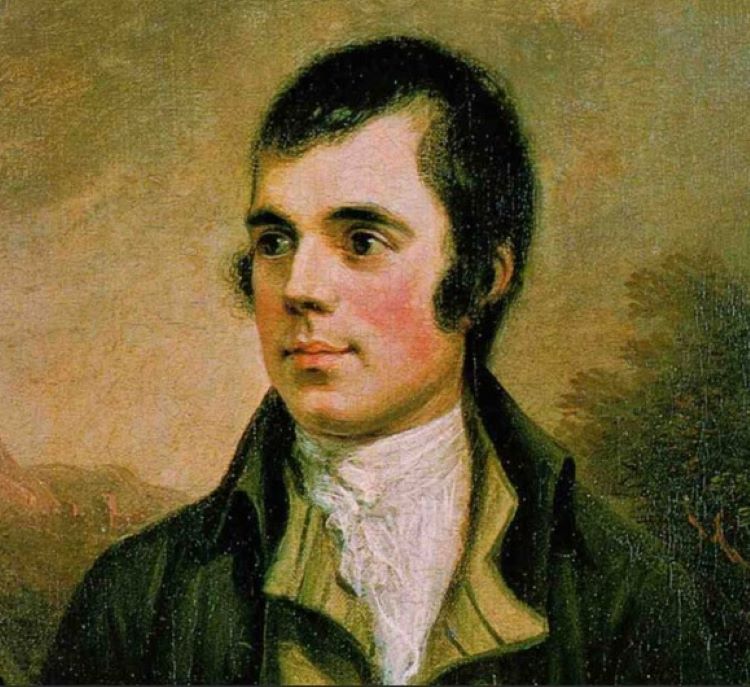As its local supermarket is currently awash with haggis, neeps, tatties, shortbread and that bright orange fizzy drink that provokes small children and adults under 6 foot in height to bursts of hyperactivity, Soundyngs ponders the advent of Burns festivals in 1859, when Burns’ night first became a major fixture in the national and indeed international calendar, commemorating the 100th year since the birth of Scotland’s national bard.
Searching in the British Newspapers archives for Burns-themed events around January 25 1859 reveals what Ann Rigney (Rigney, 2011) describes ‘an unprecedented spectacle’ in venues all around Scotland. Using the search term ‘Burns Centenary’, “search all”, and the date range 1 January 1859 to 31 January 1859, Soundyngs quickly generated 1,423 mentions in Scotland, 1614 in England, 361 in Ireland and even the Welsh commenting 72 times. The regional breakdown in the search finds – unsurprisingly – a peak of interest in Strathclyde / Western Scotland, with 491 newspaper mentions of this event. For those bewildered by the numerous results from this source, Rigney’s essay draws on a 1881 account written by James McKie to suggest that over 600 events took place in Scotland alone. An earlier account published in 1859 in the immediate aftermath of the phenomenon suggested that 872 events took place around Britain (Rigney, p.71).
Rigney’s essay (see Further Reading, below) explains what inspired the celebrations. Ground zero seems to have been in Glasgow, where a local Burns Club cooked up the notion in 1858. Burns clubs had been around for some time, taken forward from the culture of all-male dining and singing clubs familiar from 18th century Scotland onwards. Newspapers – led by the Glasgow Daily Bulletin – did much to spread the idea internationally.
Initial celebrations were not just indoor dining, singing and recitation, but also included street celebrations, which in January, in Scotland, is brave (think of the weather we’ve been having recently). Local trades, and businesses, took the opportunity to walk together playing Scottish music in an assertion of affiliation and national pride that excited illustrators and local newspaper reporters to new heights of purple prose.
The celebrations were not just a phenomenon within Scotland. Wherever Scots had settled around the globe, it seems that Burns tapped into a diasporic nostalgia for home (see particularly Leith Davis’s essay in Further Reading).
Before you slump into a haggis, neeps and tatties-induced coma, have a look in the archives to see what went on in your local town. Soundyngs went to the John O Groat Journal to find a mention of it’s home county of Caithness, and found Wick had a general town holiday to mark the occasion, with supper and dance events in the Town Hall and Pultneytown Academy. In the Presbyterian north, which was not particularly interested in Christmas festivity, Burns perhaps filled a need for a mid-winter festival that hadn’t quite been met by the debaucheries of Hogmanay. About 100 people, including ‘numerous ladies’, enjoyed the convenience of gas lighting in the town hall, and decorations of green wreaths and artwork celebrating Ayrshire: “The presence of the John O Groat Musical Club and some amateur musicians, who at suitable intervals, sung some of the best of Burns songs, likewise lent a charm to the proceedings’ (John O Groats Journal, 1859). No orange pop for these Scots: but perhaps no whisky, as the report notes that the drink supplied was tea. In a lengthy account of the after-dinner speeches, it is clear that the occasion was one which prompted thoughts on the excellence of Scottish working class culture and politics, and on the beauties of the Scottish countryside (in winter, perhaps wishful of warmer months). In Thurso in the west of the county, locals braved January storms to march through the streets carrying banners from various trades organisations, and with music supplied by a local fife band. Participants dried out in a local hotel (Pettegree, 2024). We should all be grateful that these days celebrations are sensibly indoors, out of the rain!
Traditions that have such an obvious ‘start date’ are unusual, but there was clearly something in the midwinter festival that was Burns night that struck a light in the dark month of January. Whether in whisky or that orange drink, may you raise a glass today to whatever brings you light!
Further Reading
- Anon, ‘The Burns Centenary’, John O Groat Journal, Thursday 27 January, p.3
- Leith Davis, ‘The Robert Burns 1859 Centenary: Mapping Transatlantic (Dis)location’, in Robert Burns and Transatlantic Culture, ed. Holly Faith Nelson, Sharon Alker, Leith Davis (Ashgate, 2012), pp.187ff
- James McKie, The Bibliography of Robert Burns with Biographical and Bibliographical Notes, and Sketches of Burns Clubs, Monuments and Statues (Kilmarnock, 1881)
- Jane Pettegree, ‘Volunteer Bands and Local Identity in Caithness at the Time of the Second Reform Act’, Scottish Studies 40 (2024), pp.83-110 https://doi.org/10.2218/ss.v40
- Ann Rigney, ‘Embodied Communities: Commemorating Robert Burns, 1859’., in Representations 115(1), (2011), pp.71-101 https://doi.org/10.1525/rep.2011.115.1.71

